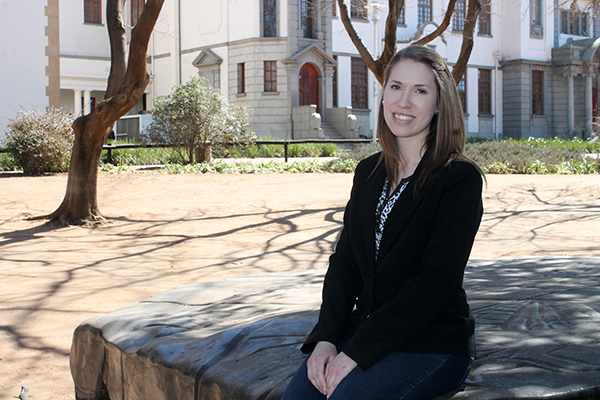Latest News Archive
Please select Category, Year, and then Month to display items
14 June 2024
|
Story Anthony Mthembu
|
Photo Suplied
 Jeremiah Hlahla, a UFS student completing his PhD in Botany at the University of Debrecen as part of an exchange initiative funded by the Erasmus+ Mobility Programme.
Jeremiah Hlahla, a UFS student completing his PhD in Botany at the University of Debrecen as part of an exchange initiative funded by the Erasmus+ Mobility Programme.
As part of an exchange initiative facilitated by the Erasmus+ Mobility Programme, Jeremiah Hlahla, a student at the University of the Free State (UFS), is nearing the completion of his PhD studies at the University of Debrecen in Hungary. Hlahla’s journey, which began in February 2024 and is set to conclude in July 2024, has been a remarkable learning opportunity. “As a first time-traveller to Europe, I have thoroughly enjoyed engaging with people from different countries and cultures,” he said.
The benefits of international collaboration
Hlahla is currently pursuing a PhD in Botany, focusing on plant stress physiology. “My current PhD project investigates the physiological, biochemical and morphological responses of vegetable-type soybean, or edamame, to combined drought and heat stress,’’ he explained. He considers the University of Debrecen the ideal institution to complete his research due to its extensive expertise and resources in similar projects. He noted that his colleagues at Debrecen conduct significant work on plant protection against biotic and abiotic stresses, including salt and drought stress, as well as proteins and amino acids in barley and other legumes.
Given the vast knowledge available on similar projects, Hlahla has found substantial engagement with his work at the University of Debrecen. “Upon arrival, I delivered an introductory lecture presenting my UFS project on the synergistic effects of combined drought and heat stress on the physiology and biochemistry of edamame. It was an engaging session as everyone could relate to my work and asked many questions,’’ he said.
Insights gained from the exchange
Hlahla has also gained valuable lessons that will assist him in his research career, including biotechnology and physiology tools. “I learned how to prepare samples and use high-performance liquid chromatography (HPLC) and reversed-phase ultra-high-performance liquid chromatography (UHPLC) to quantify proteins and amino acids,’’ he said. These techniques are beneficial not only for his current work but will also support future soybean research.
As his experience at the University of Debrecen nears its end, Hlahla reflects on the collaborations and friendships he has formed, which stand out as a significant highlight.
Humour a powerful tool to address serious issues
2017-12-06

Michelle Malan received a Dean’s medal from the Faculty of Humanities at the mid-year
graduation ceremonies for her Master’s degree.
Photo: Jóhann Thormählen
People, in most contexts, are more open to engage in serious issues such as politics and economics if it is presented in a humorous way. This makes humour a very powerful tool to address burning issues in our society.
These are some of the findings in the research of Michelle Malan, a part time lecturer in the Department of Linguistics and Language Practice at the University of the Free State (UFS).
How comedians and cartoonists use humour
The basic premise of her research, titled The Intersemiotic Translation of Humour, was to see how comedians and cartoonists take news stories and translate it into humour. She received the Dean’s medal for the best Master’s degree in the Faculty of the Humanities at the mid-year graduation ceremonies in June 2017.
“More specifically, I explored how the medium constrains potential meaning-making in cases of intersemiotic translation in which humour is constructed,” she says.
Cartoon vs a comic television show
According to her the medium in which a message is given, in this case comedy, definitely influences how one is able to form meaning from it. “For instance, a cartoon (visual medium) would have a different meaning-making potential than a comic television show.”
She also notes that one must understand the workings of humour, which includes the mediums in which it is presented, so that the intended humour does not do more harm than good.